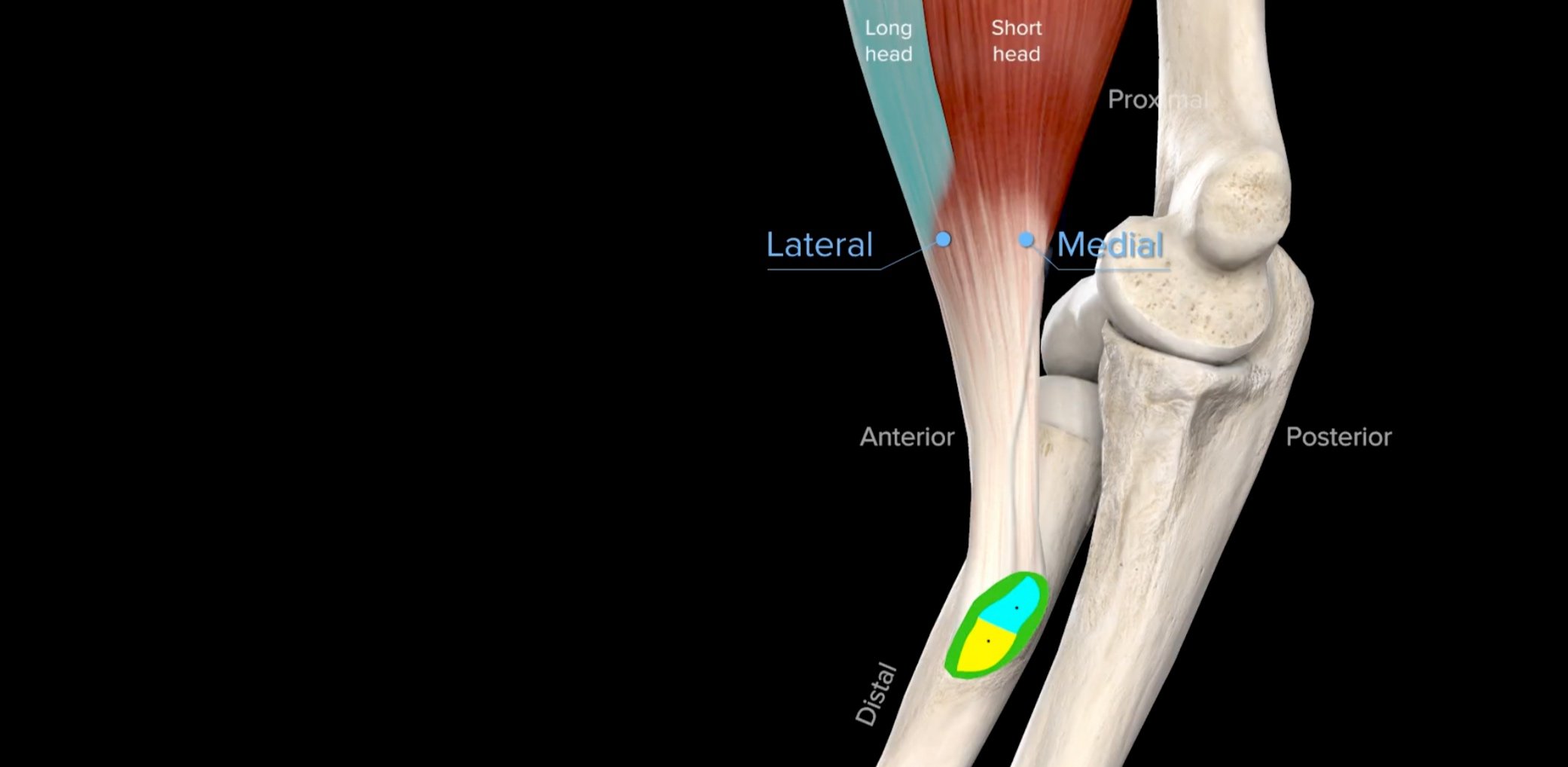
Distal Biceps Tendon Tear
Distal Biceps Tendon Tear
The biceps muscle plays an important role in flexing the elbow as well as aiding in rotation of the wrist and forearm. The upper portion of the biceps muscle originates at the top of the shoulder and continues along the anterior (front) portion of the humerus. The lower portion of the biceps muscle attaches to the lateral (outer) of the two forearm bones at the radial tuberosity, a bony prominence located just past the elbow. A distal biceps tendon injury occurs when the lower portion of the biceps tendon is torn away from its attachment site on the radial tuberosity.
Weightlifters and those that lift unusually heavy objects as part of their work duties are at an increased risk for a distal biceps tendon injury. This injury typically requires immediate surgical intervention to reattach the tendon at the elbow.
Orthopedic Surgeon and Sports Medicine specialist, Dr. Jonathan Koscso, successfully diagnoses and treats patients in Sarasota, FL and the surrounding Gulf Coast region who have experienced a shoulder injury.
Symptoms of Distal Biceps Injury
A common complaint of a distal biceps tendon injury is a sharp and sudden pain located at the elbow while attempting to lift an object (either in the gym or lifting a piece of furniture, for example). Other symptoms include:
Weakness in the elbow
Difficulty rotating the forearm
Hearing or feeling a “pop” associated with the pain
Deep throbbing pain felt in the forearm
Weakened grip and pain when flexing the hand
If a distal biceps tendon injury is suspected, immediate medical attention is recommended as prompt diagnosis allows for easier and quicker recovery. Dr. Koscso can diagnose the type and location of a biceps tendon injury after performing a comprehensive medical history and physical examination. In particular, there are a few classic physical examination findings that are associated with distal biceps tendon tears that will aid in diagnosis. Diagnostic imaging, including x-rays and magnetic resonance imaging (MRI), may be requested to rule out any fractures or characterize the extent of the injury, respectively.
Non-Surgical Treatment
Patients who do not present with any symptoms of a distal biceps tendon injury, or those that suffered a partial tear, may elect for conservative treatment only. A combination of rest, joint immobilization, and non-steroidal anti-inflammatory medications can be used for pain management. Following this, a guided physical therapy regimen may help to restore elbow range of motion and function. It should be understood, however, that non-surgical treatment of a distal biceps tendon tear can result in permanent loss of elbow strength, muscular cramping, and a cosmetic deformity. Accordingly, it is important to consult an orthopedic specialist like Dr. Koscso who has experience in treating distal biceps tendon injuries to weigh all treatment options.
Surgical Treatment
In the event of a distal biceps tendon tear, immediate surgical intervention is necessary to prevent scar tissue from shortening the damaged tendon. Dr. Koscso may utilize one of two surgical methods to reattach the damaged tendon:
1) using sutures that are passed through the radius bone and secured to a metal button, or
2) fastening the torn tendon with specialized surgical anchors that are secured within the radius bone.
Both types of distal tendon tear surgery can be done through a small incision, which creates a faster recovery period for patients to return to their normal daily activities.
Post-Operative Recovery
For a comprehensive reading of the expected post-operative recovery, including restrictions, physical therapy progressions, and return to work/sport guidelines, please see our distal biceps repair protocol on our physical therapy protocols page.
About the Author
Dr. Jonathan Koscso is an orthopedic surgeon and sports medicine specialist at Kennedy-White Orthopaedic Center in Sarasota, FL. Dr. Koscso treats a vast spectrum of sports conditions, including shoulder, elbow, knee, and ankle disorders. Dr. Koscso was educated at the University of South Florida and the USF Morsani College of Medicine, followed by orthopedic surgery residency at Washington University in St. Louis/Barnes-Jewish Hospital and sports medicine & shoulder surgery fellowship at the Hospital for Special Surgery in New York City, the consistent #1 orthopaedic hospital as ranked by U.S. News & World Report. He has been a team physician for the New York Mets, Iona College Athletics, and NYC’s PSAL.
Disclaimer: All materials presented on this website are the opinions of Dr. Jonathan Koscso and any guest writers, and should not be construed as medical advice. Each patient’s specific condition is different, and a comprehensive medical assessment requires a full medical history, physical exam, and review of diagnostic imaging. If you would like to seek the opinion of Dr. Jonathan Koscso for your specific case, we recommend contacting our office to make an appointment.





